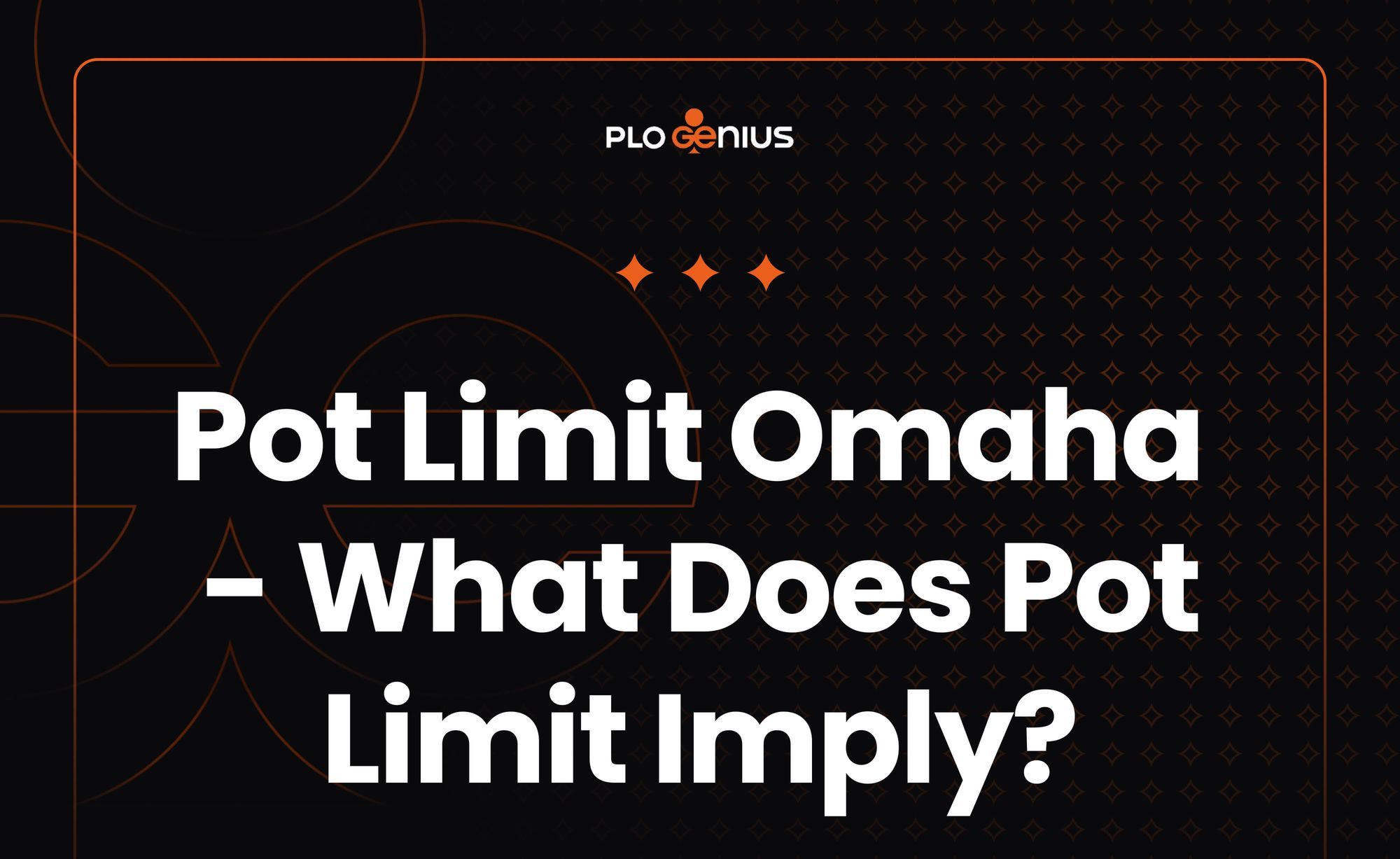Whether you have a No Limit Texas Hold'em background or are entirely new to PLO poker, the "pot limit" part is one of the most important nuances of the Omaha poker rules you must master.
Remember, having four hole cards and the inability to use only one hole card are among the basic Omaha characteristics worth knowing — we've briefly explained them in the introductory PLO article.

In this article, we'll focus on the limitation of the bet sizes, a key factor dictating the game's flow. So, without further ado, let's answer the crucial question:
How to calculate pot in PLO?
Whenever you are playing a no-limit game, you can bet one Big Blind, half the pot, entire pot or literally any amount you can come up with. That's not the case in the Pot Limit Omaha.
How does playing a pot-limit game work? In PLO, your betting sizing is limited by the current size of the pot. Here's a quick rundown of how betting works in PLO.
Calculating pot size preflop
If you are the first to act in a $1/$2 game, the maximum bet you can choose is $7. This amount consists of $2 required to match the previous bet (in this case, a Big Blind) and the size of the pot after matching that bet (which would be: $1 Small Blind + $2 Big Blind + $2 matching the BB = $5).
Adding that up, we get: $5+$2=$7. This is the maximum size of an open raise at a $1/$2 game.
What about the 3betting? Let's continue the example and assume someone opened to $7 from the UTG, and you'd like to 3bet. What's the maximum bet size you can use?
The last bet is $7, and there are also two blinds, a $1 Small Blind and a $2 Big Blind. Using the math mentioned above, the pot size bet would be:
$7 (previous bet) + $17 (the size of the pot after matching the last bet) = $24.
Calculating pot size postflop
Let's look at the flop (and subsequent betting rounds).
If the pot on the flop is $20, the first player to act can choose from the minimum bet of one Big Blind ($2) up to the full size of the pot ($20). Let's calculate the amount you can pick if you'd like to raise the full pot versus the bet of $10 into $20. The math goes as follows:
Pot raise size equals: $10 (amount to call the last bet) + $40 (the size of the pot after the last bet would have been called)= $50
There is also a shortcut to calculate the pot size bet in PLO. It works like this: multiply the last bet by three and add the size of the pot before any betting. In our last example, it would be 3 × $10 + $20 = $50.
Estimating the size of the pot may be troublesome at the very beginning, but as it's the case with almost any poker game, math gets easier with time. Also, remember that when playing online, you see the maximum bet you can place, and when you play poker at the casino, you can say that you wish to "pot", and the dealer will count how big the bet is.
Side note. Omaha rules allow the game to be played in no-limit or fixed-limit variants, but these are rather unpopular, and if you are starting with the game, you shouldn't bother too much about them. The vast majority of Omaha poker games are played with the pot limit.

That is the basic math of Pot Limit Omaha poker
And trust us, knowing the maximum raise at any given time in the PLO hand is essential knowledge. While the maximum bet limit prevents you from overbetting, which greatly differentiates the game from No Limit Hold'em, there are other intricacies to uncover in the realm of PLO.
We'll look at them in the upcoming series of PLO-themed articles, so stay tuned.
And if you want to hone your PLO poker skills right now, try PLO Genius app. PLO Genius will improve your preflop hand selection and help you avoid costly mistakes.
 ✨
✨

